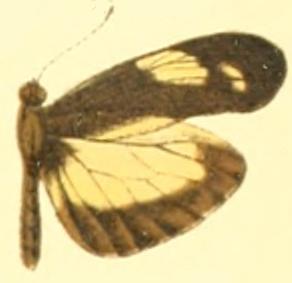
The Andes, Andes Mountains or Andean Mountains are the longest continental mountain range in the world, forming a continuous highland along the western edge of South America. The range is 7,000 km (4,350 mi) long, 200 to 700 km wide, and has an average height of about 4,000 m (13,123 ft). The Andes extend from north to south through seven South American countries: Venezuela, Colombia, Ecuador, Peru, Bolivia, Chile, and Argentina.

Anredera is a genus of plants native to Latin America, the West Indies, Texas, and Florida. Some are naturalized in other regions. Most of them evergreen vines of dry scrubland and thickets. Members of the genus are commonly known as Madeira vines. At least one species, A. cordifolia bears edible roots or tubers and leaves similar to those of Basella alba.

Nepenthes densiflora is a tropical pitcher plant endemic to Sumatra, where it grows at an altitude of between 1700 and 3200 m above sea level.

The common big-eared bat is a bat species from South and Central America. It is a neotropical leaf-nosed bat.

Inga is a genus of small tropical, tough-leaved, nitrogen-fixing trees and shrubs, subfamily Mimosoideae. Inga's leaves are pinnate, and flowers are generally white. Many of the hundreds of species are used ornamentally.

Pithecellobium dulce, commonly known as Manila tamarind, Madras thorn, or camachile, is a species of flowering plant in the pea family, Fabaceae, that is native to the Pacific Coast and adjacent highlands of Mexico, Central America, and northern South America. It is also sometimes known as monkeypod, but that name is also used for several other plants, including Samanea saman. It is an introduced species and extensively naturalized in the Caribbean and Florida, as well as the Philippines and Guam via the Manila galleons. It has also been introduced to Thailand and South Asia, It is considered an invasive species in Hawaii.

Spermacoce or false buttonweed is a genus of flowering plants in the family Rubiaceae. It comprises about 275 species found throughout the tropics and subtropics. Its highest diversity is found in the Americas, followed by Africa, Australia and Asia.

Arctostaphylos densiflora, known by the common name Vine Hill manzanita, is a very rare species of manzanita. It is endemic to Sonoma County, California, where it is known from only one extant population of 20 to 30 individual plants. These last wild members of the species are on land near Sebastopol which is owned and protected by the California Native Plant Society. In addition, there are five to ten plants of this manzanita taxon growing on private property about a mile away. The local habitat is mostly chaparral on sandy shale soils.

Spartina densiflora is a species of grass known by the common name denseflower cordgrass. It has been reclassified as Sporobolus montevidensis after a taxonomic revision in 2014, but Spartina densiflora is still in common usage. It is native to the coastline of southern South America, where it is a resident of salt marshes. It is also known on the west coast of the North America and parts of the Mediterranean coast as an introduced species and in some areas a noxious weed. In California it is a troublesome invasive species of marshes in San Francisco Bay and in Humboldt Bay, where it was introduced during the 19th century from Chile in ballast.

Dismorphia amphione, the tiger mimic white, is a species of butterfly of the family Pieridae. It is found from Mexico and the Caribbean down to Brazil and Bolivia.

Prepona laertes, the shaded-blue leafwing or Laertes prepona, is a butterfly of the family Nymphalidae. It is found in large parts of Central and South America.

Lieinix nemesis, the frosted mimic-white, nemesis mimic white or falcate dismorphia, is a butterfly in the family Pieridae. It is found from Mexico to Peru. The habitat consists of mid-elevation cloudforests.

Dismorphia zathoe, the zathoe mimic white is a butterfly in the family Pieridae. The species was first described by William Chapman Hewitson in 1858. It is found in Central America and northern South America.

Inga thibaudiana is a species of tropical tree in the family Fabaceae. It occurs in Central and South America, where it is known as guaba de mono, guabito and guavo de playa.

Inga alba is a species of tree from the family Fabaceae, native to Central and South America. The common name in English is white inga.
Secondatia is a genus of plants in the family Apocynaceae first described as a genus in 1844. It is native to Jamaica and South America.

Siphoneugena is a genus of the botanical family Myrtaceae, first described as a genus in 1856. It is native to Central and South America as well as the West Indies.
Inga adenophylla is a species of tree in the family Fabaceae. It is native to South America, particularly the countries of Bolivia and Peru.
Inga cinnamomea is a species of plant in the family Fabaceae. It is distributed from Colombia to Bolivia, including Amazonian Brazil. The common name ingá-guaçú is in reference to the very large fruit pod.
Inga spectabilis is a species of plant in the family Fabaceae.














